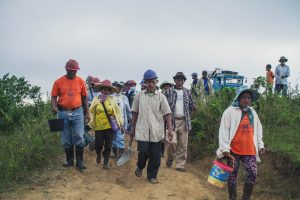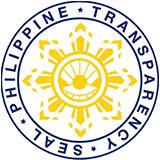
Tamac in the Municipality of Villaviciosa was isolated for several days when Typhoon Ineng hit the Province of Abra in 2015. The roads were impassable and residents were forced to immediately evacuate their homes after a huge landslide occurred near their major settlement affecting 134 households.
Demetria Gamileng, 56, shared that she felt helpless when she gave one last glance at her newly built house before heading to the evacuation center. She lamented that they never had the chance to enjoy the comforts of their new house. “We have been stashing away our profit from tobacco production for several years for that house only to leave it as soon as it was finished,” she said.
The community admits that it was never easy for them to start all over again. But instead of drowning themselves with this painful challenge, they chose to gather their strength and live their lives as if it was their second.
According to Punong Barangay Carmelo Bayod, as per survey, around 50 hectares of land in the barangay and its surrounding areas eroded. Two houses were destroyed, but fortunately, there were no casualties.
While they battled to survive the natural disaster that befell them, their strength as a community was also put to test. They had to put things in the proper perspective and provided strength to one another more than before.
Five kilometers away from their previous settlement, they began building their new homes using materials provided by the Department of Social Welfare and Development Core Shelter Program and the Municipal Local Government Unit.
But, just as they were recovering from the damages brought by Typhoon Ineng, they received another blow in 2016 when Typhoon Lawin raged through their relocation site leaving some of the Core Shelters destroyed.
“Before we know it, we went back to zero because of Lawin,” Bayod narrated.
How Bayanihan rebuilt Tamac
Kumon, the barangay’s version of Bayanihan, was practiced to hasten recovery. This practice requires every household to send a representative during communal activities that need manpower.
“Our barangay is proud that we still practice “Kumon” in all our community projects and activities,” Gamileng boasted.
She believes that Kumon helped them to get through the physical and emotional struggle brought by Typhoons Ineng and Lawin. This also allowed them to continue receiving basic services from various government agencies and private organizations.
In 2016 and 2017, Barangay Tamac was able to land the top priority projects for both second and third cycle of the DSWD’s Kapit-Bisig Laban sa Kahirapan-Comprehensive and Integrated Delivery of Social Services(Kalahi-CIDSS).
Following the Kalahi-CIDSS’ community-driven development processes, strengthened community participation reflected in their output was noted in the barangay.
During the implementation, they employed Kumon to fast track implementation. True enough, Tamac completed 300-linear meter Farm-to-Market road project for the second cycle, which was programmed for 90 days, in just 27 days. For the third cycle, they finished implementing a 325-linear meter road in just 18 days.
“During our scheduled bayanihan, every capable community member, be it women, youth, senior citizens came out to help and most of the time some families came with all their family members” Joselito Rodriguez, Chair of Community Volunteers under the DSWD Kalahi-CIDSS program, proudly remarked.
As one of the community volunteer, Gamileng is also convinced that constantly working with each other during scheduled kumon has brought them closer to one another which made facilitation of every activity easier and faster.
Vice Mayor Marjorie Lagen said that the unity of the community members is one of the major factors that contributed to their fast recovery from the two disasters that severely hit the barangay.
“When I first got introduced to Barangay Tamac, the bayanihan spirit was already there. When Ineng happened, that’s when we saw their strength. I’m not talking about their physical strength but their strength in keeping their faith and core values as they try to recover,” Villaviciosa Vice Mayor Marjorie Lagen said.
She added that Barangay Tamac is the farthest barangay of the municipality and thus, most of the time residents have to rely on each other be it personal or communal matters.
Making Waves
The barangay’s fast-tracked implementation of two cycles of DSWD Kalahi-CIDSS inspired the interest of other municipalities, within and outside the Cordillera, implementing the same program.
Inspired by how Barangay Tamac turned their challenges to develop their community, community volunteers and LGU members of Burgos, La Union visited the municipality to learn from them.
Tamac community volunteers and local government officials also became favorite speakers on good practices and strategies during regional conferences and learning visits.
Last year, Villaviciosa received a back-to-back recognition from DSWD-CAR. The municipality was recognized as a model LGU implementing the Kalahi-CIDSS program in November 2017 while Barangay Tamac was recognized as Regional BAYANi Ka! Awardee under the improved local governance category in December 2017.
During the Regional Local Government Unit Forum on the same month they were recognized as the “First to Complete Program Implementation of DSWD Kalahi-CIDSS NCDDP Second Cycle” and as the municipality with highest barangay assembly participation rate with an average of 80% rating for the 3-cycle implementation of the program.
The unwavering Kumon in Barangay Tamac surely got them through major crisis in their lives and in their community. This bayanihan spirit has also charmed various agencies, government and private, to grant fund and other services the community needed. #DSWD-CAR, SOCIAL MARKETING UNIT, Jasmin Kiaso




